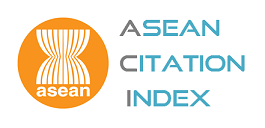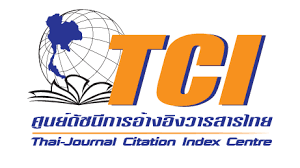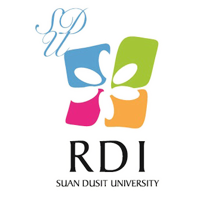The Characteristics of Agile Human Resource Practices: A Systematic Literature Review Approach
Keywords:
Agile HR Practices, Characteristics of Agile HR, Systematic literature reviewAbstract
This qualitative research aims to investigate the characteristics of Agile Human Resource Practices (AHRPs) that facilitate adaptive practices within organizations. The research methodology employed a systematic literature review, which serves as a valuable tool for organizational management to embrace rapid changes in both the present and future. Prominent organizations globally, particularly in Western countries such as Google, Amazon, and Microsoft, have adopted agile practices to gain a competitive edge, while Eastern countries are beginning to learn and develop similar approaches. In the context of a rapidly changing world characterized by volatility, unpredictability, complexity, and ambiguity (VUCA), and in light of the transformative impact of COVID-19, organizations have been compelled to adapt for survival during crises. The management of roles and responsibilities across all dimensions must be re-evaluated to enable an agile working environment, which is essential for organizations to maintain long-term competitiveness. Traditional human resource management may no longer adequately serve organizations operating in diverse contexts. The findings of this research identify six key characteristics of AHRPs: Flexibility, Speed, Flow, Adaptability, Customer Orientation, Team Collaboration, and Technology (3FACTT), which collectively represent the essential traits of AHRPs that benefit organizational management. Furthermore, this study provides a foundation for future research aimed at examining the characteristics of agile HR practices, particularly for HR practitioners seeking to develop and design organizations for the future.
References
Aghina, W., Ahlback, K., de Smet, A., Lackey, G., Lurie, M., Murarka, M., & Handscomb, C. (2018). The five trademarks of agile organizations. Retrieved August 19, 2023, from https://www.mckinsey.com/business-functions/organization/our-insights/the-five-trademarks-of-agile-organizations
Agile Manifesto. (2001). Manifesto for Agile Software Development. Retrieved August 19, 2023, from https://agilemanifesto.org
Ahammad, M., Glaister, K., & Gomes, E. (2020). Strategic agility and human resource management. Human Resource Management Review, 30(1), 100700.
AIHR. (n.d.-a). About us. Retrieved August 19, 2023, from https://www.aihr.com/about-us/
AIHR. (n.d.-b). Agile HR: All you need to know to get started. Retrieved August 19, 2023, from https://www.aihr.com/blog/agile-hr/
Ananthram, S., & Nankervis, A. (2013). Strategic agility and the role of HR as a strategic business partner: an Indian perspective. Asia Pacific Journal of Human Resources, 51(4), 454-470.
Appelbaum, E., Bailey, T., Berg, P., Kalleberg, A., & Bailey, T. (2000). Manufacturing advantage: Why high-performance work systems pay off. New York: Cornell University Press.
Azizi, M., Atlasi, R., Ziapour, A., Abbas, J., & Naemi, R. (2021). Innovative human resource management strategies during the COVID-19 pandemic: A systematic narrative review approach. Heliyon, (7)6, E07233.
Azizsafaei, F. (2017). The Role of Human Resource Management in Achieving Organisational Agility. UK: Birmingham City University
Becker, B., & Huselid, M. A. (1998). High performance work systems and firm performance: A synthesis of research and managerial implications. Research in Personnel and Human Resource Management, 16, 53-101.
Bennett, N., & Lemoine, G. (2014). What a difference a word makes: Understanding threats to performance in a VUCA world. Business Horizons, 57(3), 311-317.
Bersin, J. (2020). Responding to COVID-19. Ten lessons from the world's HR leaders. Retrieved August 19, 2023, from https://joshbersin.com/2020/04/responding-to-covid-19-ten-lessons-from-the-worlds-hr-leaders/
Baird, P., Anderson, T., Newcombe, H., & Lowry, R. (1988). Genetic disorders in children and young adults: a population study. American Journal of Human Genetics, 42(5), 677-693.
Biron, M., De Cieri, H., Fulmer, I., Lin, C., Mayrhofer, W., Nyfoudi, M., …Sun, J. (2021). Structuring for innovative responses to human resource challenges: A skunk works approach. Human Resource Management Review, 31(2), 100768.
Boehm, B., & Turner, R. (2005). Management challenges to implementing agile processes in traditional development organizations. IEEE software, 22(5), 30-39.
Burger, C., Koster, A., Lechner, C., & Szczepanski, M. (2008). Making Growth happen: How to Manage Growth Initiatives Effectively. New York: Booz & Company.
Cappelli, P., & Neumark, D. (2001). Do “high-performance” work practices improve establishment-level outcomes? Ilr Review, 54(4), 737-775.
CIPD. (n.d.). Our history. Retrieved August 19, 2023, from https://www.cipd.org/en/about/our-history/
CIPD. (2020). People Profession 2030 : A collective view of future trends. London: Chartered Institute of Personnel and Development.
Cooke, F., Schuler, R., & Varma, A. (2020). Human resource management research and practice in Asia: Past, present and future. Human Resource Management Review, 30(4), 100778.
Dank, N., & Hellström, R. (2020). Agile HR: Deliver value in a changing world of work. London: Kogan Page Publishers.
Deksnys, M. (2018). Organizational agility in high growth companies. Lithuania: Mykolas Romeris University.
Denning, S. (2015). How to make the whole organization “Agile”. Strategy & Leadership, 43(6), 10-17.
Denning, S. (2018). The emergence of Agile people management. Strategy & Leadership, 46(4), 3-10.
Doz, Y. (2020). Fostering strategic agility: How individual executives and human resource practices contribute. Human Resource Management Review, 30(1), 100693.
Dyer, L., & Shafer, R. (2003). Dynamic organizations: Achieving marketplace and organizational agility with people (CAHRS Working Paper, 03-04). New York: Cornell University.
Festing, M., & Eidems, J. (2011). A process perspective on transnational HRM systems—A dynamic capability-based analysis. Human Resource Management Review, 21(3), 162-173.
Gartner. (2018). Agile HR 101 a guidebook for HRBPs. Retrieved August 19, 2023, from https://www.academia.edu/39969674/A_Guidebook_for_HRBPs_Agile_HR_101
Gandee, T., & Haan, P. (n.d.). Sustainable Innovation for Google. Retrieved August 19, 2023, from https://www.academia.edu/download/32827107/Paper_23_J1b_Gandee_and_Haan.pdf
Han, S., & Stieha, V. (2020). Growth mindset for human resource development: A scoping review of the literature with recommended interventions. Human Resource Development Review, 19(3), 309-331.
Harsch, K., & Festing, M. (2020). Dynamic talent management capabilities and organizational agility—A qualitative exploration. Human Resource Management, 59(1), 43-61.
Heilmann, P., Forsten-Astikainen, R., & Kultalahti, S. (2020). Agile HRM practices of SMEs. Journal of Small Business Management, 58(6), 1291-1306.
Holbeche, L. (2019). Designing sustainably agile and resilient organizations. Systems Research and Behavioral Science, 36(5), 668-677.
Huselid, M. (1995). The impact of human resource management practices on turnover, productivity, and corporate financial performance. Academy of Management Journal, 38(3), 635-672.
Javadin, S., Tabatabaie, S., & Zarandi, A. (2018). Prioritizing and Evaluating the Dimensions of Agility of Human Resources in Small and Medium Companies of Tehran Province. International Journal of Environmental and Science Education, 13(8), 661-668.
Jiang, K., Lepak, D., Hu, J., & Baer, J. (2012). How does human resource management influence organizational outcomes? A meta-analytic investigation of mediating mechanisms. Academy of Management Journal, 55(6), 1264-1294.
Junker, T., Bakker, A., Gorgievski, M., & Derks, D. (2021). EXPRESS: Agile Work Practices and Employee Proactivity: A Multilevel Study. Human Relations, 75(12), 1-29.
Kavitha, R., & Suresh, M. (2021). Agile Practices in Human Resource Management. In Advances in Materials Research. New York: Springer.
Kehoe, R., & Wright, P. (2013). The impact of high-performance human resource practices on employees’ attitudes and behaviors. Journal of Management, 39(2), 366-391.
Khodabandeh, N., Mohammdi, N., Mansouri, A., & Droodi, H. (2018). Designing a human resource agility model based on grounded theory approach (Study case: Social security organization). Iranian Journal of Educational Sociology, 1(7), 163-179.
LeMay, M. (2018). Agile for everybody: Creating fast, flexible, and customer-first organizations. CA: O'Reilly Media Inc.
Liberati, A., Altman, D., Tetzlaff, J., Mulrow, C., Gøtzsche, P., Ioannidis, J., Clarke, M., … Moher, D. (2009). The PRISMA statement for reporting systematic reviews and meta-analyses of studies that evaluate health care interventions: Explanation and elaboration. Journal of Clinical Epidemiology, 62(10), e1-e34.
Malik, M., Sarwar, S., & Orr, S. (2021). Agile practices and performance: Examining the role of psychological empowerment. International Journal of Project Management, 39(1), 10-20.
Management & Solutions. (2019). From agile delivery, to an agile organization. Retrieved August 19, 2023, from https://www.managementsolutions.com
McMackin, J., & Heffernan, M. (2021). Agile for HR: fine in practice, but will it work in theory? Human Resource Management Review, 31(4), 100791.
McMackin, J., & Heffernan, M. (2023). Agile: How HR is changing shape. Retrieved June 19, 2023, from https://www.hrmagazine.co.uk/content/features/agile-how-hr-is-changing-shape/
Nijssen, M., & Paauwe, J. (2012). HRM in turbulent times: how to achieve organizational agility? The International Journal of Human Resource Management, 23(16), 3315-3335.
Park, H., Gardner, T., & Wright, P. (2004). HR practices or HR capabilities: Which matters? Insights from the Asia Pacific region. Asia Pacific Journal of Human Resources, 42(3), 260-273.
Pasmore, B., & O'Shea, T. (2010). Leadership agility: A business imperative for a VUCA world. People and Strategy, 33(4), 32.
Patel, P., Messersmith, J., & Lepak, D. (2013). Walking the tightrope: An assessment of the relationship between high-performance work systems and organizational ambidexterity. Academy of Management Journal, 56(5), 1420-1442.
Sharifi, H., & Zhang, Z. (1999). A methodology for achieving agility in manufacturing organisations: An introduction. International Journal of Production Economics, 62(1-2), 7-22.
SHRM. (n.d.-a). About SHRM. Retrieved August 19, 2023, from https://www.shrm.org/about
SHRM. (n.d.-b). 2023-2024 SHRM state of the workplace. Retrieved August 19, 2023, from https://www.shrm.org/mena/topics-tools/research/2023-2024-shrm-state-workplace
Sherehiy, B., Karwowski, W., & Layer, J. K. (2007). A review of enterprise agility: Concepts, frameworks, and attributes. International Journal of Industrial Ergonomics, 37(5), 445-460.
Sherehiy, B., & Karwowski, W. (2014). The relationship between work organization and workforce agility in small manufacturing enterprises. International Journal of Industrial Ergonomics, 44(3), 466-473.
Srivastava, P. (2016). Flexible HR to cater to VUCA Times. Global Journal of Flexible Systems Management, 17(1), 105-108.
Subramanian, N., & Suresh, M. (2022). Assessment framework for Agile HRM practices. Global Journal of Flexible Systems Management, 23, 135–149.
Torrington, D., MacKay, L., & Hall, L. (1985). The changing nature of personnel management. Employee Relations, 7(5), 10-16.
Ulrich, D. (1997). HR of the future: Conclusions and observations. Human Resource Management, 36(1), 175-179.
Ulrich, D., & Dulebohn, J. (2015). Are we there yet? What's next for HR? Human Resource Management Review, 25(2), 188-204.
Ulrich, D., & Yeung, A. (2019). Agility: The new response to dynamic change. Strategic HR Review, 18(4), 161-167.
Winter, B. (2015). Agile Performance Improvement. (1st Ed.). New York: Apress.
Downloads
Published
How to Cite
Issue
Section
License
Copyright (c) 2025 Journal of Multidisciplinary in Social Sciences

This work is licensed under a Creative Commons Attribution-NonCommercial-NoDerivatives 4.0 International License.







